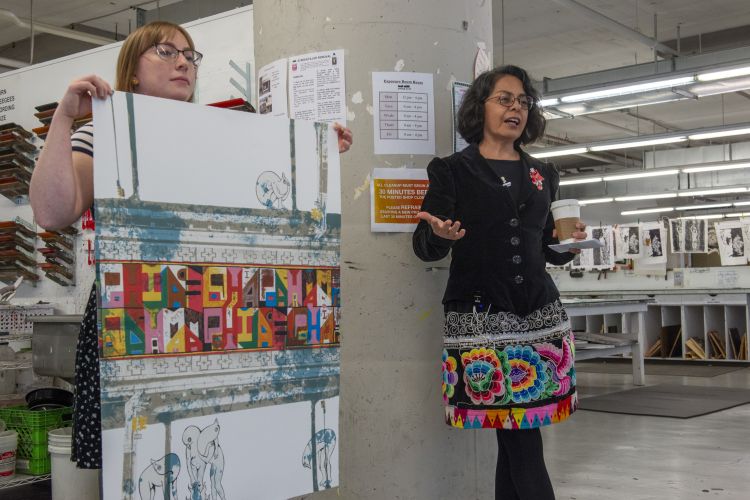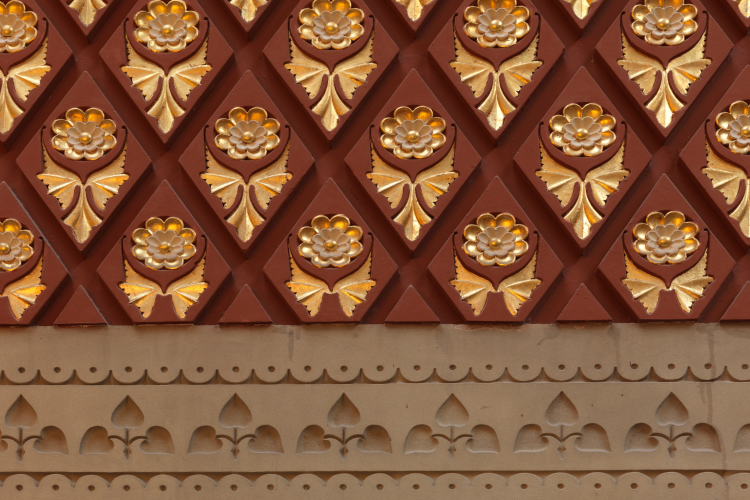STORIES FROM PAFA
Ben Volta
A Dislike for School Leads Artist to Have Passion for Students
School wasn’t Ben Volta’s favorite place growing up.
“In eleventh grade, I got the notice that I would most likely repeat the grade. It was a message of ‘You’re going to summer school without a doubt’,” he said. “I was one of those kids who felt like they didn't belong and just went to school. I didn't do any homework and I skateboarded all the time.”
But now as an adult, Volta (BFA ’05) says his best days are in the classroom. Through his work with Mural Arts Philadelphia and various organizations across Philadelphia, Volta is teaching kids creative thinking through art.
For him, art was a way to not only get through high school but a way to thrive and grow.
“Art was the one place I felt like I belonged and could make sense of,” Volta said. “I went to my English teacher and asked if I could get extra credit for reading a book and then make artwork on it. I did the same thing for my other classes. I made art in response to history and economics. I still went to summer school but I didn't repeat eleventh grade.”
After graduating high school, Volta soon realized he wanted to continue using art to think outside the box and help others do the same.
He enrolled at PAFA after seeing the Annual Student Exhibition, saying the breadth of work students were producing blew him away.
The Annual Student Exhibition (ASE) is an academic capstone and the longest-standing exhibition of its kind. The ASE offers PAFA's emerging artists the opportunity to curate, install, and sell their own work in a professional setting.
“I was always told it was a very traditional school but I saw everything from very traditional work to very contemporary work,” he said. “I liked knowing I would be getting a foundation that goes back into tradition, and also balance my interest in technology and working within contemporary art. I knew I was going to learn something I wouldn’t learn elsewhere.”
At PAFA, Volta could make any art he wanted but he spent most of his time working with others on their creative pursuits.
He worked in the Museum Education department, challenging public school students to draw in response to paintings in the museum’s collection. And he started a summer camp at his parent’s church, spending a week collaborating on art projects.
After graduating from the PAFA-Penn BFA program in 2005, Volta started working with schools on small projects.
“I was working with a math and science teacher and the principal saw me and told me he wanted me to be part of the school in some way,” Volta said. “He allowed me to come in twice a week and there was no expectation other than work with the kids. Be creative in the math classroom and the science classroom and if you make something that's great but the process is what we really value.”
In 2012, Volta began working with Mural Arts Philadelphia. The long-standing public arts organization was able to help Volta amplify what he was already doing. Six by five-foot murals became 12,000 square feet and instead of spending 10 weeks in a school he could spend a few years working with students.
He recently finished a mural project at South Philadelphia High School. Parts Per Million is a 12,000 square feet mural Volta created with environmental science and math students. The project took three years to complete.
“That school is incredibly huge so the site was incredibly challenging, but the main challenge there was that many of the kids didn't speak English so I was working with ESL students,” he said. “The best classes there were the ones where we could design and be in the math classroom and design algebra and geometry projects that allowed the kids to enter into the project on their own terms without having to speak.”
The students took data and visual language and added their own colors and shape to create the mural that covers most of the outside of the high school. He doesn’t expect this mural project or any other he does at schools across the city to be the defining moment of a student’s high school experience, that’s not the point.
“It’s one experience among many that kids deserve,” Volta said, adding that these art projects help students no matter what path they go on later in life.
In fact, he prefers to work with students who don’t consider themselves artists, young people who don’t think they are gifted in the arts.
“We need doctors who are thinking creatively, that are connected to the unknown in creative ways. We need plumbers, they are incredibly creative problem solvers,” Volta said. “Whatever you go into, this is another way of thinking about the thing. If you draw something, that's thinking. It doesn't have to be a good drawing, you’re taking these thoughts that are in your head and seeing the world in a different way.”
—LeAnne Matlach (lmatlach@pafa.org)




